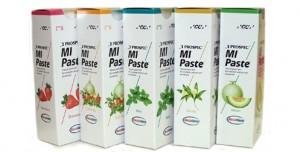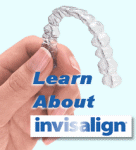Oral Hygiene

Linda J. Krebs, DDS, PhD
Permanent damage to tooth enamel can occur if the teeth and brackets are not kept clean. Areas on the enamel surface may begin to lose minerals (the early stage of tooth decay) leaving unsightly white spots. You may also develop inflamed, bleeding gums (gingivitis).
Gingivitis and the early stages of tooth decay can be reversed by taking extra care with your cleaning and diet. If left untreated, they can lead to bigger problems that will require treatment and have life long effects. While you are having orthodontic treatment, you need to continue to have regular check-ups with your family dental professional to ensure little problems don´t become big ones.
1 – If your orthodontist has fitted you with elastics, remove them before brushing.
2 – Floss! You can use the floss threaders, superfloss, or even a water pick.
3 – Using a fluoride toothpaste and a small soft toothbrush, place your brush at an angle of 45 degrees against the gums. Gently brush along the gumline where the gums and teeth meet, using a small circular motion on each tooth.
4 – Spend about 10 seconds on each tooth before moving onto the next tooth, brushing in a set pattern so that you don’t miss any teeth.
5 – Gently brush the braces. Press your toothbrush firmly enough so that the bristles spread into the gaps between the wire and the tooth. Brush in and around all of the brackets and wires. Ensure that you brush under the wires, sometimes using an interproximal / “Christmas tree” brush can help. A battery powered brush may also be helpful.
6 – Brush both the inside and the outside surfaces of your teeth using a gentle circular motion on each tooth.
7 – For the chewing surfaces, use a firm back and forth motion.
8 – Don´t forget to replace your elastics.
9 – Occasionally use plaque disclosing tablets to help you see if you are leaving plaque in any areas. Feel free to ask someone from our office about these.
10 – Use other oral care products as instructed by your orthodontist.

HOW TO PREVENT WHITE SPOTS:
A simple way to help prevent the problem is by practicing good oral hygiene. This means brushing at least three times a day and flossing daily. This benefits your teeth in two ways. The first is that the action of brushing is going to help fight plaque and prevent the spots all together. The second way is by removing any bacteria that could easily get into the demineralized areas and cause more damage or staining.
HOW TO TREAT WHITE SPOTS:
One of the most common ways to treat white spots on teeth after braces is through a process known as re-mineralization. This technique is effective because it directly addresses the problem causing the spots in the first place. Re-mineralization involves applying some type of cream or other substance to your teeth for a set period of time. The cream contains the minerals that the bacteria have removed from your teeth. Your teeth will reabsorb those minerals rebuilding the area. Re-mineralization can cause the spots to fade or could remove them completely depending on your individual situation.




